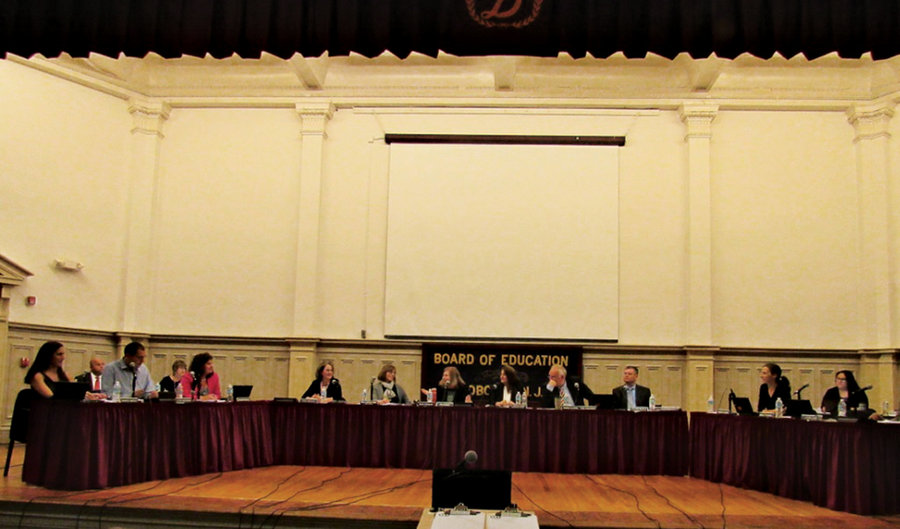Working parents in the mile-square city often rely upon elementary afterschool programs during the evening to care for their children, as well as offer fun and educational activities. This past week’s Hoboken Board of Education meeting on Tuesday Oct. 13 addressed these programs and how they can work better in the future.
“Our intent as we move forward through this school year into the next school year is begin to create a comprehensive afterschool program,” said Superintendent Christine Johnson, who began her five-year term in Hoboken last July. ”Next year all of our elementary after-school programs will consistently be funded through a few different sources, but No Child Left Behind will be consistent [across all schools].”
No Child Left Behind (NCLB), a federal grant, and Family Friendly, a state grant, currently only cover the cost of the after school program at Thomas G. Connors Elementary School.
“In no way should the socioeconomic status of a family or neighborhood determine what educational opportunities a school district can provide.” – Christine Johnson
____________
In the past, the schools have had varying schedules of aftercare, and Connors, located in the poorest part of town, had the fewest aftercare hours for parents who wanted to work. Last spring, the district committed to changing Connors’ after school program from three days to five days a week like at Wallace and Calabro. Brandt has a preschool provider program, which is not run by the district and instead by the Mile Square Pre School Program, like at Demarest School.
Johnson said during the meeting that the district was informed in the last week of September that Family Friendly grant money will expire at the end of the year. The school district plans to supplement those costs, which go to Connors School, with NCLB funds guaranteeing no lapse in the programs.
The 2015-2016 academic school year is the last that aftercare programs will run on their current schedule. Wallace and Calabro end at 5:30 p.m., Connors end at 5 p.m. but staff members are on hand until 6 p.m. each day to help working parents, and Brandt ends at 6.
“When operating a district program next year, the times will all be consistent,” said Johnson.
Johnson, who hopes to ultimately apply NCLB Funds to all elementary aftercare programs, said the programs are very similar in regard to activities. Ultimately she plans to use next year’s NCLB grant to help merge the programs to offer clubs, workshops, homework help sessions and recreational activities.
“[The difference in the after school programs] is that Wallace and Calabro, through parent groups or PTOs, invite outside companies in or hire specialists, [which] charge parents tuition, to run enrichment programs,” Johnson said after the meeting.
NCLB also funds a range of other services such as teacher professional development programs and programs for students who need assistance with the English language.
The NCLB grant, which the district submits an application for every school year, was used in the past in a number of ways including helping to attain mathematics and reading coaches for the schools, Johnson said. Next year, the district hopes to concentrate these funds into the after school programs.
Looking at a discrepancy
At the meeting, school board candidate and vocal resident Patricia Waiters referred to the possibility of segregation among the public schools.
“Wallace is like a whole new school…and [I] see the attention that building is getting. Connors is not getting the same attention. I’m [going to] call it like I see it,” said Waiters during the meeting.
According to past reports from The Hoboken Reporter, among the city’s schools, Connors Elementary School stands out as the most segregated. In the 2012-13 school year, Connors was 4 percent white. It was also 97 percent economically disadvantaged based on students’ eligibility for free or reduced price lunch.
Connors is the closest elementary school to the Hoboken Housing Authority (HHA) main campus, where the majority of Hoboken’s low-income residents live.
Johnson said, “This year we are listening to members of the community who are bringing up really powerful points about the schools. In no way should the socioeconomic status of a family or neighborhood determine what educational opportunities a school district can provide to the students.”
Connors students aren’t exposed to enrichment programs as frequently due to the fact that parents currently don’t push for them as much as in the other schools, Johnson said. However, the programs are available to them.
Connors was the school hit hardest by Hurricane Sandy in 2012 and the oldest building among the elementary schools.
Johnson noted after the meeting that Connors, as well the old Demarest School building, is currently being assessed by the School Development Authority (SDA) in case they may be eligible to receive state funding for renovations.
Student(s) of the month
For September 2015, the following students were honored for academic achievement at their respective schools: India Magaletta (kindergartener from Joseph F. Brandt Primary School), Alexandra DeLaRosa (first grader from Salvatore R. Calabro School), Tashonna Serrano (sixth grader from Thomas G. Connors Elementary School), Camila Suarez (third grader from Wallace Elementary School), Christian Santiago (eighth grader from Hoboken Junior High School) and Tiara Stevens (12th grader from Hoboken High School).
Steven Rodas can be reached at srodas@hudsonreporter.com.
